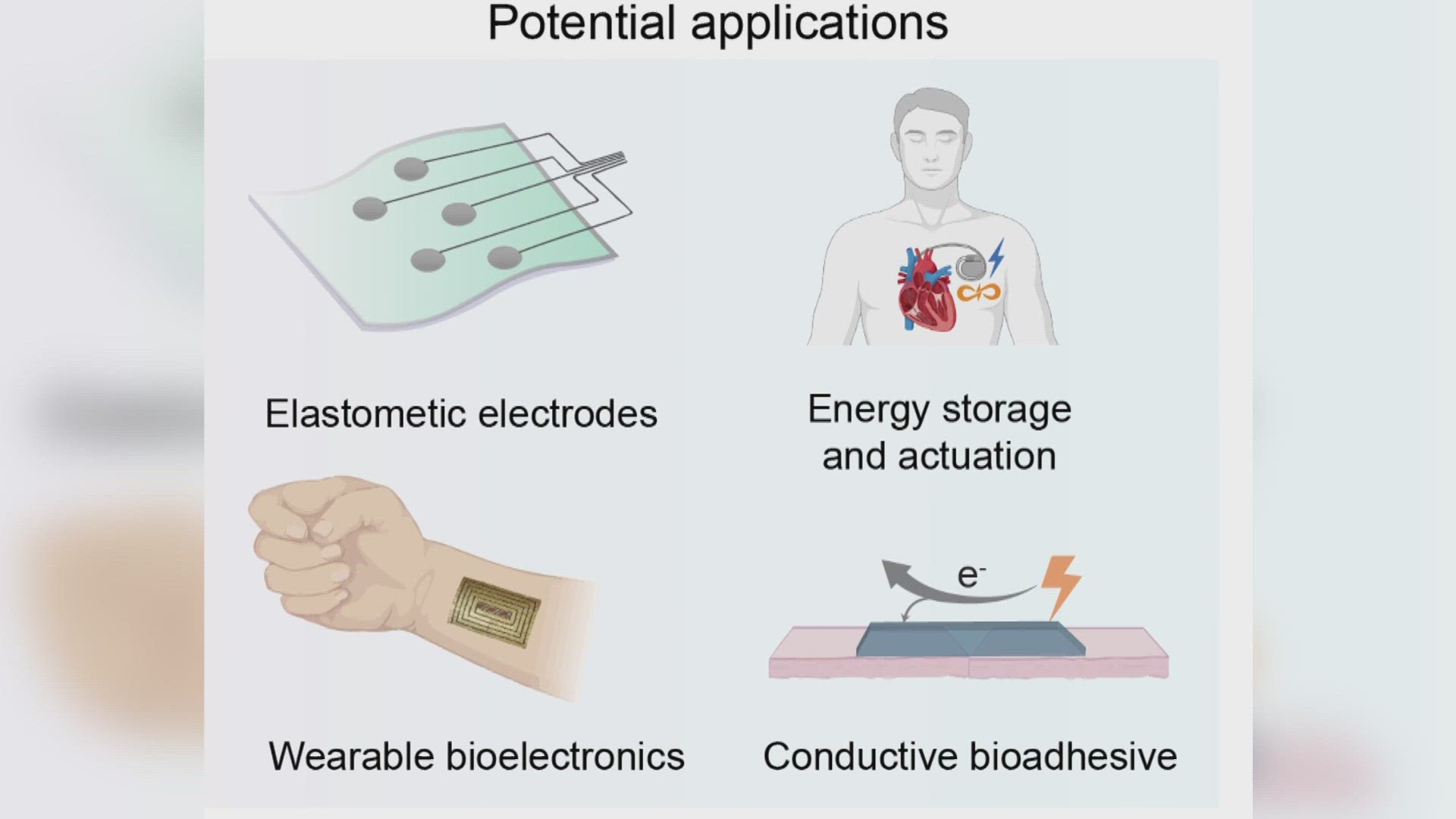COLLEGE STATION, Texas — The Biomedical Engineering Department at Texas A&M University is revolutionizing the way people can recover from their injuries.
By using nanoengineered hydrogels, researchers have developed a 3-D printed electric skin, or E-SKIN that can flex, stretch and even sense like human skin. The wearable device is an adhesive material that can monitor motion, temperature, heart rate and blood pressure while helping users improve their motor skills.
Its uses range from robotics and prosthetics to wearable technology, sports and security systems.
Dr. Akhilesh Gaharwar, Director of the Biomedical Engineering Department gave an example, "For elderly people, because this material can also sense motion, for if any elderly people who can’t walk or unable to do any movement, if they fall, this material can sense the motion and also alert a medical device that can be connected to emergency services.”
Dr. Gaharwar says the device will open new possibilities for human-machine interaction as well.
“So we can use it for electronic tattoos as well to control the motion of opening a door or starting a car or other things, so this material will enable human-machine interface to be much more effective and streamlined,” Gaharwar said.
The device is not an implant, and the team hopes to get it on the market as soon as possible.
Also on KAGS:

